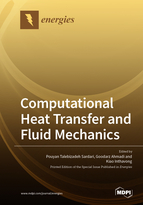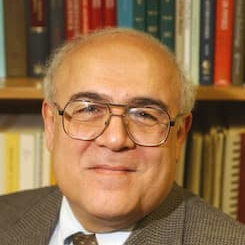Computational Heat Transfer and Fluid Mechanics
A special issue of Energies (ISSN 1996-1073). This special issue belongs to the section "J: Thermal Management".
Deadline for manuscript submissions: closed (30 September 2021) | Viewed by 30442
Special Issue Editors
Interests: computational fluid dynamics (CFD); heat and mass transfer; turbulence; thermal energy storage; multiphase flows; aerosols transport and deposition phase change materials; photovoltaic/thermal systems
Special Issues, Collections and Topics in MDPI journals
Interests: computational fluid dynamics (CFD); turbulence; multiphase flows; aerosols transport and deposition; respiratory flows; heat and mass transfer
Special Issues, Collections and Topics in MDPI journals
Special Issue Information
Dear Colleagues,
The Guest Editors would like to invite you to submit a paper to the Special Issue of Energies on the subject area of “Computational Heat Transfer and Fluid Mechanics”.
With the advances in high-speed computer technology, complex heat transfer and fluid flow problems can be solved computationally with high accuracy. Computational modeling techniques have found a wide range of applications in diverse fields of mechanical, aerospace, energy, environmental, as well as numerous industrial systems. Computational modeling has also been used extensively for optimization of performance of a variety of engineering designs.
This Special Issue would welcome papers in various aspects of innovative computational heat transfer and fluid flows, including both fundamental and practical applications of single and multiphase flows, turbulent flows, energy storage, heat exchangers, respiratory flows and heat transfer, and biomedical applications.
Dr. Pouyan Talebizadeh Sardari
Prof. Dr. Goodarz Ahmadi
Dr. Kiao Inthavong
Guest Editors
Manuscript Submission Information
Manuscripts should be submitted online at www.mdpi.com by registering and logging in to this website. Once you are registered, click here to go to the submission form. Manuscripts can be submitted until the deadline. All submissions that pass pre-check are peer-reviewed. Accepted papers will be published continuously in the journal (as soon as accepted) and will be listed together on the special issue website. Research articles, review articles as well as short communications are invited. For planned papers, a title and short abstract (about 100 words) can be sent to the Editorial Office for announcement on this website.
Submitted manuscripts should not have been published previously, nor be under consideration for publication elsewhere (except conference proceedings papers). All manuscripts are thoroughly refereed through a single-blind peer-review process. A guide for authors and other relevant information for submission of manuscripts is available on the Instructions for Authors page. Energies is an international peer-reviewed open access semimonthly journal published by MDPI.
Please visit the Instructions for Authors page before submitting a manuscript. The Article Processing Charge (APC) for publication in this open access journal is 2600 CHF (Swiss Francs). Submitted papers should be well formatted and use good English. Authors may use MDPI's English editing service prior to publication or during author revisions.
Keywords
- Computational fluid dynamics (CFD)
- Heat and mass transfer
- Fluid mechanics
- Aerospace
- Laminar and turbulent flows
- Multiphase flows
- Energy storage
- Optimization
- Aerosols transport and deposition
- Nanofluids
- Porous media
- Heat exchanger
- Combustion
- Respiratory systems
- Biomedical applications
- Spray atomization







